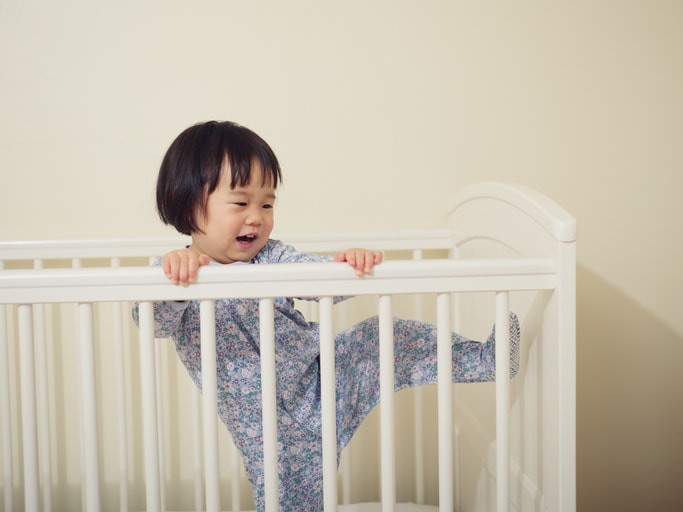Dads today are trading the briefcase for the diaper bag. The after-work martini with the guys is replaced with doling out juice boxes to a gaggle of kids at the playground. You might even find today’s dad waving his wife off to work, a baby on his hip and a toddler at his feet, in a role reversal that has come full circle.
Meet the modern day dad: the guy who is now trying to juggle work, family and household duties, and finding it just as challenging, frustrating and rewarding as women have for decades. (Moms, try not to roll your eyes!)
And now that so many dads are hands-on, how are they handling this new work-life balance? Here are some of the challenges modern dads are facing.
To get tips on staying sane while balancing it all, check out
Care.com’s Guide to Managing Stress.
Juggling Work and Family
50 percent of working dads find it very or somewhat difficult to successfully balance all their responsibilities (compared to 56 percent of working mothers), according to the Pew Research Center’s Modern Parenthood study released this past March. Because dads are spending more time on child care and household duties than they used to, and their work responsibilities aren’t always easing up to accommodate those changes, dads are feeling the pinch.
“They are having difficulty juggling everything,” says Brad Harrington, executive director of the Boston College Center for Work and Family. Despite the popular view that men are managing their work duties, their home duties and their life goals without much stress, the studies don’t back that up, reveals Harrington.
For years, moms have struggled with the pull of family time and having a thriving professional career — it’s not easy. Fathers want to spend more time with their kids (46 percent of dads say they don’t get enough), but they also feel the pull of professional success.
The 2011 Boston College study, The New Dad: Caring, Committed and Conflicted, found that 76 percent of working dads wanted greater job responsibility and 58 percent wanted to get into a senior management role. But we all know, says Harrington, that senior management positions and greater work responsibility hardly ever leave more time for family.
Just ask Anne-Marie Slaughter, who caused a stir last year with her essay, “Why Women Still Can’t Have It All,” in The Atlantic. “Having it all [is] not possible in many types of jobs…at least not for very long,” she wrote.
“[Until now] the conversation around having it all is centered around women,” Harrington says. Unlike women who have dealt with the issue for decades, men are finally starting to experience the work-family conflict. Sometimes career aspirations or expectations for family time need modification because the two rarely blend seamlessly. “In the back of their minds,” says Harrington, “women go in knowing some compromises have to be made.”
And the struggles for men are different. Because this is a changing way of life for many families, men don’t have role models to show them how to make the balancing act successful.
Corporate culture today, especially in larger companies, doesn’t always mesh with men’s desire for more family time. Paternity leave is still hit or miss, but it is improving — even major league baseball teams allow 72 hours of leave when a new family member is born.
Blazing a New Trail
Dads themselves are changing the face of modern fatherhood. Contrary to a popular belief, the uptick in dads who are full-time caregivers is not based on the recent economic downturn.
Center for Work and Family’s 2012 study on at-home dads, The New Dad: Right at Home, found that out of the men they surveyed, switching from an employee to a stay-at-home dad is a choice, not a reaction to a layoff. They want to be the primary caregiver and are not killing time until the next job opens up.
“People have a stereotype of dads that we don’t like to share our experiences,” says Lance Somerfield, founder of the NYC Dads Group, an extensive group of New York City area dads who meet at events throughout the city. “Our community of dads shatters that.”
At 700 members strong, the group brings together all kinds of dads, from full-time stay-at-home dads (who comprise half of the membership) to those just looking to do fun activities with their kids. And their conversations, says Somerfield, mirror what many moms discuss when they get together: potty training, discipline, finding time for exercise, etc.
Forgetting the Old Ways
According to the Pew study, 1965 fathers spent only 2.5 hours a week on child care. Today that number has jumped to about 7 hours.
Far from the “Leave It to Beaver” days when dads arrived home from work just in time to impart some well-thought-out wisdom over a waiting dinner, today’s dad is no stranger to changing diapers or taking the kids to a playgroup.
Are the new attitudes a knee-jerk reaction to how today’s dad was raised? While no one says that previous generations’ dads were not good fathers, they are saying that they might not want to raise their kids in the same way.
“I rarely saw my dad during the week,” says Somerfield. “He was not a hands-on dad and never changed a diaper, but he was a good dad. He was a different type of dad than I am.” Somerfield relishes his role as a full-time dad and appreciates the small moments they are able to share because he is the primary caretaker.
Harrington agrees, saying that stay-at-home-dads make it startlingly clear that the bond they forge with their children when they are the primary caretakers is deeply meaningful. The love, appreciation and sense of connection to their kids are profound.
Figuring Out What it Means to be a Modern Dad
And cultural attitudes are shifting. No, dad still doesn’t have all the answers — but what parent does? However, he is trying to have a place in his children’s lives. Modern dads, says Somerfield, are asking the question moms have tackled for decades: how can I have a work and life balance? “After having a child, you ask what is best for the family situation? Dads are just starting to ask those questions, too. We are just starting to scratch the surface of these questions,” he says.
“I think some of it is changing by necessity and some by choice,” said Scott Behson, associate professor of management and acting department chair at Fairleigh Dickinson University in New Jersey and author of the blog Fathers, Work and Family. Almost all experts point to the pivotal shift of women in the workplace as triggering new expectations for men at home.
Learning to Be Flexible
Not all dads have the ability to reduce their work hours, but many are trying to be flexible when they can. Maybe a dad takes his daughter to a music class every Tuesday morning and then works later on Tuesday nights, says Somerfield.
He feels that the balance is easier for everyone when two supportive, involved parents share the load and society accepts the new reality. “How much easier is parenting when you have two involved parents?” he asks. “It is always easier to do something when others are pioneering the way.”
In the past few years, Somerfield says that the explosion of blogs and websites for dads points to the tremendous shift in attitudes and actions.
Harrington agrees, saying he hopes the future brings a blurring of the gender lines in the workplace and the home.
“People jump to conclusions about domestic tasks and child care,” he says. “I hope this causes us to pause and stop making assumptions.”
When a dad is out with his kids, Harrington hopes the assumption that he is having a “daddy day” or just giving mom a break will disappear, and that it will become normal for dads to reduce their work hours or do the cooking and pick up the kids from school.
“It will just be what an engaged parent does,” says Harrington. “Young people will grow up and think that is the norm.”
Julia Quinn-Szcesuil is an award-winning freelance writer and a mom to two girls. She lives in Massachusetts and has written for local and national publications.






